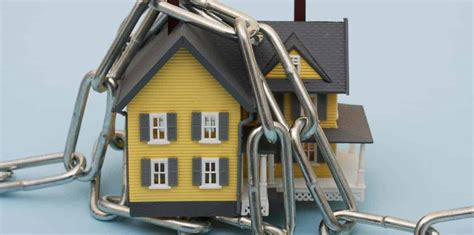Lien Removal: A Fresh Start for Your Home
A lien on your property can feel like a dark cloud hanging over your head, hindering your ability to sell, refinance, or even make improvements. But understanding the process of lien removal can bring a sense of relief and pave the way for a brighter financial future. This comprehensive guide will walk you through the intricacies of lien removal, offering practical advice and illuminating the path to a fresh start for your home.
What is a Lien?
A lien is a legal right granted to a creditor to seize and sell your property if you fail to fulfill a financial obligation. This obligation can stem from various sources, including:
- Unpaid taxes: Property taxes are a significant source of liens. Failure to pay them can result in a tax lien placed on your property by your local government.
- Unpaid mortgages: If you default on your mortgage payments, the lender can place a lien on your home to recover the outstanding debt.
- Unpaid contractor bills: If you hire a contractor for home improvements and fail to pay them, they can file a mechanic's lien against your property.
- Judgments: Court judgments against you can result in liens being placed on your assets, including your home.
The presence of a lien significantly impacts your property's value and your ability to leverage its equity. Understanding the type of lien you're facing is the crucial first step towards removal.
How Do I Find Out If I Have a Lien?
The simplest way to determine if a lien exists on your property is to check your property records. This can typically be done through your county's recorder's office or assessor's website. Many counties offer online access to property records, making the process quick and convenient. Look for any documents indicating outstanding debts or liens against your property. Additionally, your mortgage lender or any creditors you owe may inform you if a lien has been placed.
What are the Different Types of Liens?
Understanding the specific type of lien is vital in determining the removal process. Here are some common types:
- Tax Liens: These are imposed by government entities for unpaid property taxes. They typically require payment of the back taxes, plus penalties and interest.
- Mechanic's Liens: Filed by contractors or subcontractors who haven't been paid for work performed on your property. Resolution often involves negotiation or legal action.
- Judgment Liens: These arise from court judgments against you. Removal usually involves settling the judgment.
- Mortgage Liens: These are placed by lenders to secure a mortgage loan. They are removed when the mortgage is paid in full.
How to Remove a Lien: A Step-by-Step Guide
The process of lien removal varies depending on the type of lien. However, the general steps often include:
- Identify the Lien Holder: Determine who filed the lien and the amount owed.
- Negotiate a Payment Plan: Contact the lien holder and attempt to negotiate a payment plan or settlement. This is often the most effective and least costly way to remove a lien.
- Pay the Debt in Full: Once a payment plan is agreed upon or a settlement reached, pay the debt in full.
- Obtain a Release of Lien: After payment, request a formal release of lien from the lien holder. This document proves the lien has been satisfied.
- File the Release: File the release of lien with the appropriate county office to officially remove the lien from your property records.
What Happens If I Can't Afford to Pay?
If you're unable to afford to pay the debt, explore options such as:
- Negotiating a lower settlement amount: Lien holders may be willing to accept a reduced amount to resolve the debt quickly.
- Seeking legal advice: A legal professional can advise you on your rights and potential legal options, such as bankruptcy.
- Exploring government assistance programs: Some government programs may offer financial assistance to help resolve tax liens or other debts.
Can I Sell My Home with a Lien?
Selling your home with a lien is possible, but it significantly complicates the process. The buyer will typically need to pay off the lien or the proceeds from the sale will be used to satisfy the debt. Disclosing the lien is crucial to avoid legal complications.
How Long Does Lien Removal Take?
The timeframe for lien removal varies widely depending on the type of lien, the complexity of the situation, and the responsiveness of the lien holder. It could range from a few weeks to several months.
Protecting Yourself from Future Liens
Proactive measures can help you prevent future liens:
- Pay your bills on time: This is the most crucial step in avoiding liens.
- Maintain accurate financial records: This will help you track your debts and payments.
- Seek professional advice: Consult with a financial advisor or accountant to manage your finances effectively.
This information is for general guidance only and does not constitute legal advice. It's essential to consult with legal professionals for personalized advice based on your specific circumstances. Removing a lien can be a complex process, but by understanding the steps involved and taking proactive action, you can regain control of your financial situation and secure a fresh start for your home.

